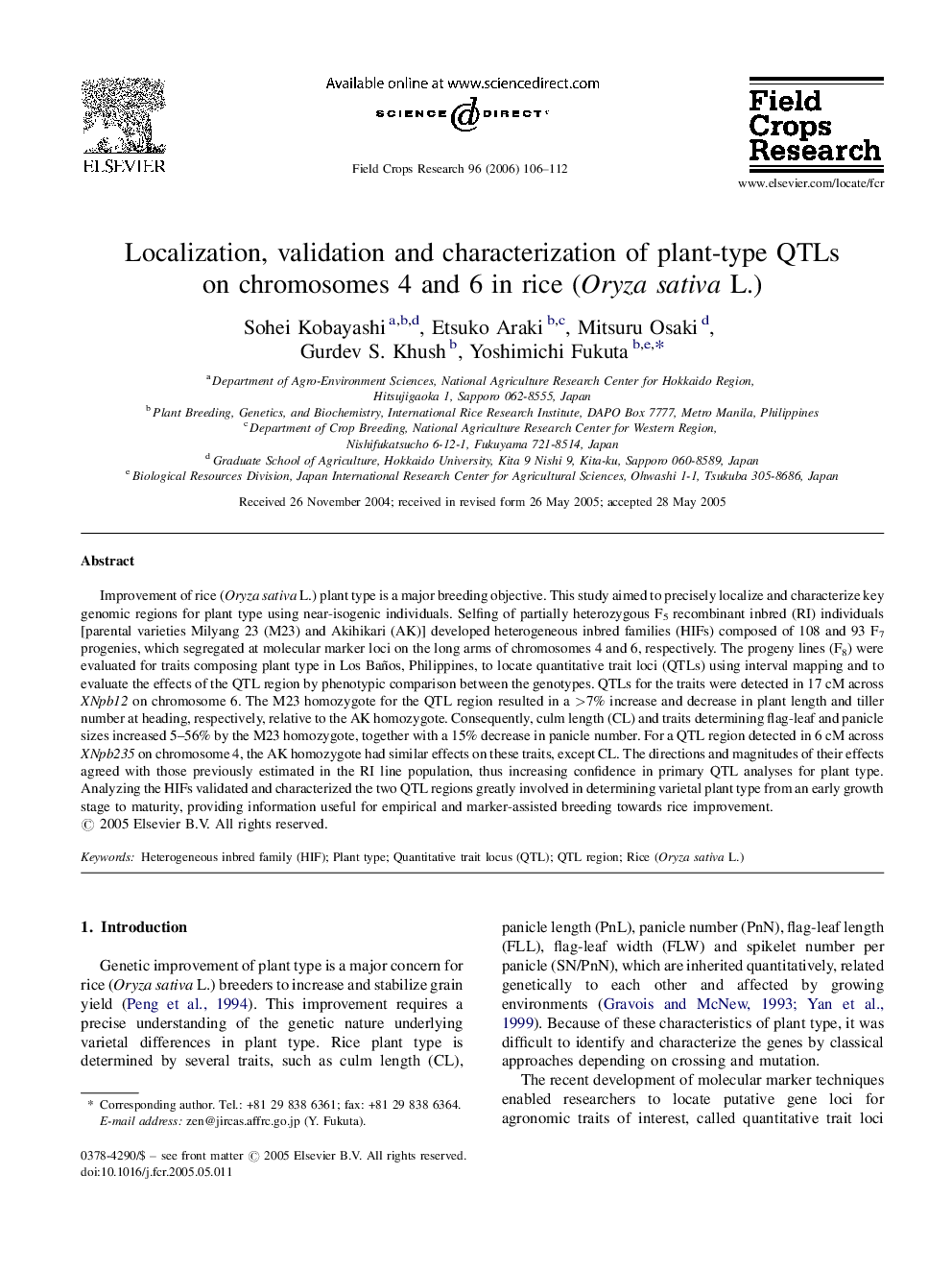| Article ID | Journal | Published Year | Pages | File Type |
|---|---|---|---|---|
| 4511895 | Field Crops Research | 2006 | 7 Pages |
Improvement of rice (Oryza sativa L.) plant type is a major breeding objective. This study aimed to precisely localize and characterize key genomic regions for plant type using near-isogenic individuals. Selfing of partially heterozygous F5 recombinant inbred (RI) individuals [parental varieties Milyang 23 (M23) and Akihikari (AK)] developed heterogeneous inbred families (HIFs) composed of 108 and 93 F7 progenies, which segregated at molecular marker loci on the long arms of chromosomes 4 and 6, respectively. The progeny lines (F8) were evaluated for traits composing plant type in Los Baños, Philippines, to locate quantitative trait loci (QTLs) using interval mapping and to evaluate the effects of the QTL region by phenotypic comparison between the genotypes. QTLs for the traits were detected in 17 cM across XNpb12 on chromosome 6. The M23 homozygote for the QTL region resulted in a >7% increase and decrease in plant length and tiller number at heading, respectively, relative to the AK homozygote. Consequently, culm length (CL) and traits determining flag-leaf and panicle sizes increased 5–56% by the M23 homozygote, together with a 15% decrease in panicle number. For a QTL region detected in 6 cM across XNpb235 on chromosome 4, the AK homozygote had similar effects on these traits, except CL. The directions and magnitudes of their effects agreed with those previously estimated in the RI line population, thus increasing confidence in primary QTL analyses for plant type. Analyzing the HIFs validated and characterized the two QTL regions greatly involved in determining varietal plant type from an early growth stage to maturity, providing information useful for empirical and marker-assisted breeding towards rice improvement.
